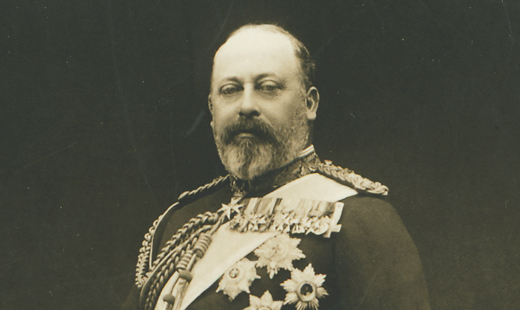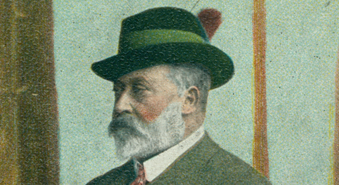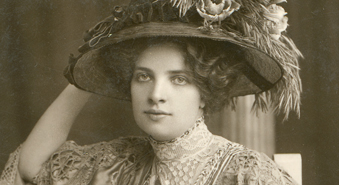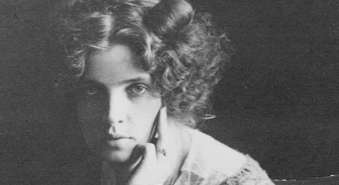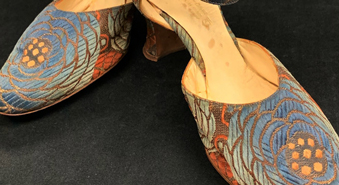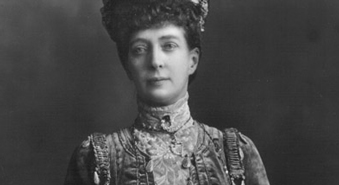
Presents
Maud Allan - An Edwardian Sensation
Grace and Elegance: The Essence of Edwardian London
A Romanticized Period
With nostalgic memories of garden parties, extravagant dining and great affluence, the Edwardian Era is often recalled as Britain’s golden age. Epitomized by the popular BBC television show Downton Abbey, and eloquently described by author Samuel Hynes, the Edwardian Era is frequently romanticized as a “leisurely time when women wore picture hats and did not vote, when the rich were not ashamed to live conspicuously, and the sun really never set on the British flag.” While it is true that the upper class’ prosperity was both visible and widespread, this idealized perception of the era was created during the years following the Great War, when Britain, like the rest of the world, felt the catastrophic repercussions of battle and yearned for a time when life felt simpler. In reality, there were great differences in the quality of life between the wealthy and poor. Through the working class’ protests and demands for change, the end of the period marked significant shifts in politics, working conditions and the status of women..
The Edwardian Era is often recalled as a romantic time of summer afternoons and garden parties and, of course, luxurious foods. Dinner hosts and guests were expected to be impeccably dressed and to follow specific etiquette, such as good manners while eating and serving food. At large dinner parties, catering for twenty people would require around fifty pieces of silver, china and crystal to be used for each guest – that’s one thousand items to be delivered at the correct time from kitchen to table! Servants also had the tedious job of counting each item as it was taken from, or returned to, the silver safe.
Success Shaped by a King
The era was named after King Edward VII, who reigned from 1901 to 1910, but the term actually encompasses the period from the mid-1890s to the First World War. The new King was a leader of the fashionable elite who influenced London’s taste, style and obsession with beauty. The Edwardian ethos asserted that beauty was neither seen in one’s character nor physique, but rather one’s status, posture and attire. Through Maud Allan’s poise and the elegance of her dancing, she personified the very essence of Edwardian London and quickly became a darling of society. As one critic commented, “She has the wonderful gift of expressing by means of the dance the very feeling and meaning of a period.”
Much of Maud’s success can be chalked up to coincidence. Her natural composure, social skills and elegant dancing made her fortuitously attuned to what the Edwardians considered “good taste,” which was important because Britain carried enormous influence during the era. Therefore, Maud’s London success was instrumental to her career as it helped her gain critical respectability: with London’s approval, Maud Allan was able to reach international stardom.
Adding to Maud Allan’s success was her association with King Edward VII, who publicly praised her dancing, thus reaffirming her prowess while perpetuating her perceived embodiment of grace and elegance – the two ideals of the Edwardian Era. King Edward VII had an insatiable appetite for luxuries, indulging in everything from women to wine. In September 1907, during one of his spa retreats to Marienbad, Maud Allan arranged to dance before the King. Word of Allan’s performance made its way back to England with the King leading to her first performance in London in 1908.
In stark contrast to her performances as Salomé, off-stage Allan presented a fine example of Edwardian dress and etiquette.
Maud Allan’s sense of fashion and taste for finer things continued past the Edwardian age as evidenced by pieces of clothing left behind and later donated to Dance Collection Danse.
The Edwardian ethos was exemplified in the figure of Queen Alexandra, Consort of King Edward VII. While she was not a leading light in London’s cultural or social worlds, Queen Alexandra served as a model of Edwardian style and taste. Beauty was seen in her appearance rather than in her person, in her posture rather than in her physique; because of her station in life and the conventions of the day, she was perceived as the epitome of elegance and grace. As the Salomé dancer, Maud Allan was perceived in much the same way. When the Edwardian attitude towards grace and beauty changed with the death of King Edward VII in 1910 and the start of the First World War in 1914, Maud’s career was doomed.
